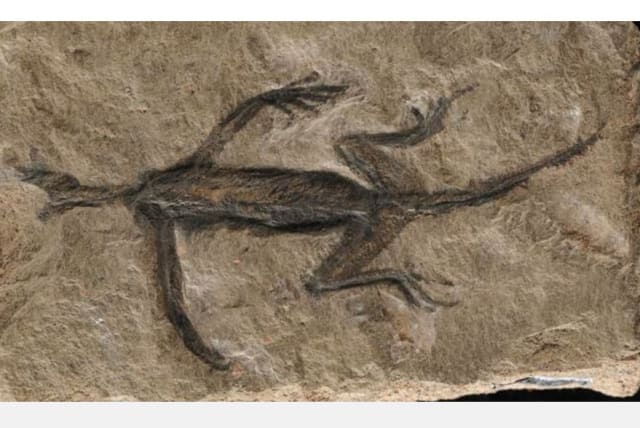Mystery solved: Oldest fossil reptile found in the Alps is historical forgery

A new examination of the remnants declared that it was partly a phony and urged caution in how the fossil is used in future research.
Fakes in antique furniture, jewelry, and other objects are quite commonplace, but not so much in archaeological findings. For almost a century, a fossil from the Italian Alps believed to be 280 million years old that has baffled researchers for decades has turned out to be – in part – a forgery.
After a new examination of the remnants, a team led by Dr. Valentina Rossi of University College Cork in Ireland declared that it was partly a phony and urged caution in how the fossil is used in future research.
The remains represented one of the oldest fossil reptiles and one of the very few skeletal specimens with evidence of soft-tissue preservation from the Cisuralian (Early Permian) of the Italian Alps. Discovered in 1931, Tridentinosaurus antiquus was thought to be an important specimen for understanding early reptile evolution. Its body outline, appearing dark against the surrounding rock, was initially interpreted as preserved soft tissues, leading to its classification as a member of the reptile group Protorosauria.
But this new research, published in the scientific journal Paleontology under the title “Forged soft tissues revealed in the oldest fossil reptile from the early Permian of the Alps,” revealed that the fossil renowned for its remarkable preservation is mostly just black paint on a carved lizard-shaped rock surface.
Rossi, of the university’s School of Biological, Earth and Environmental Sciences, said: “Fossil soft tissues are rare, but when found in a fossil, they can reveal important biological information, for instance, the external coloration, internal anatomy and physiology. The answer to all our questions was right in front of us. We had to study this fossil specimen in details to reveal its secrets – even those that perhaps we did not want to know.”
The microscopic analysis showed that the texture and composition of the material did not match that of genuine fossilised soft tissues.
Preliminary investigation using ultraviolet photography revealed that the whole specimen was treated with some sort of coating material. Coating fossils with varnishes and/or lacquers was the norm in the past and sometimes is still necessary to preserve a fossil specimen in museum cabinets and exhibits. The researchers were hoping that beneath the coating layer, the original soft tissues were still in good condition to extract meaningful palaeobiological information.
However, they realized that the body outline of Tridentinosaurus antiquus was artificially created, probably to enhance the appearance of the fossil. This deception misled previous researchers, and now caution is being urged when using this specimen in future studies.
Co-author Prof. Evelyn Kustatscher, who coordinated the project “Living with the supervolcano” said: “The peculiar preservation of Tridentinosaurus had puzzled experts for decades. Now, it all makes sense. What it was described as carbonized skin, is just paint.”
However all not all is lost – the fossil is not a complete fake. The bones of the hindlimbs, especially the femurs. seem genuine but poorly preserved. Moreover, the new analyses have shown the presence of tiny bony scales called osteoderms – like the scales of crocodiles – on what perhaps was the back of the animal.
The researchers said that their findings are an example of how modern analytical paleontology and rigorous scientific methods can resolve an almost century-old paleontological enigma.
Jerusalem Post Store
`; document.getElementById("linkPremium").innerHTML = cont; var divWithLink = document.getElementById("premium-link"); if (divWithLink !== null && divWithLink !== 'undefined') { divWithLink.style.border = "solid 1px #cb0f3e"; divWithLink.style.textAlign = "center"; divWithLink.style.marginBottom = "15px"; divWithLink.style.marginTop = "15px"; divWithLink.style.width = "100%"; divWithLink.style.backgroundColor = "#122952"; divWithLink.style.color = "#ffffff"; divWithLink.style.lineHeight = "1.5"; } } (function (v, i) { });

